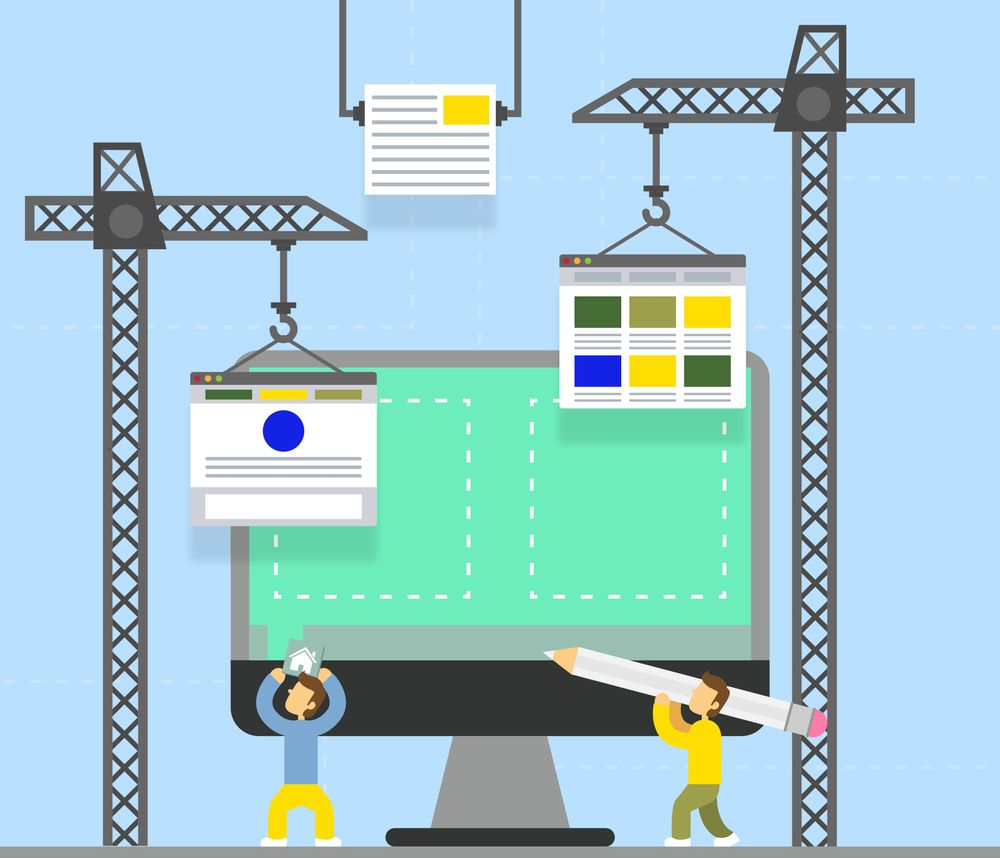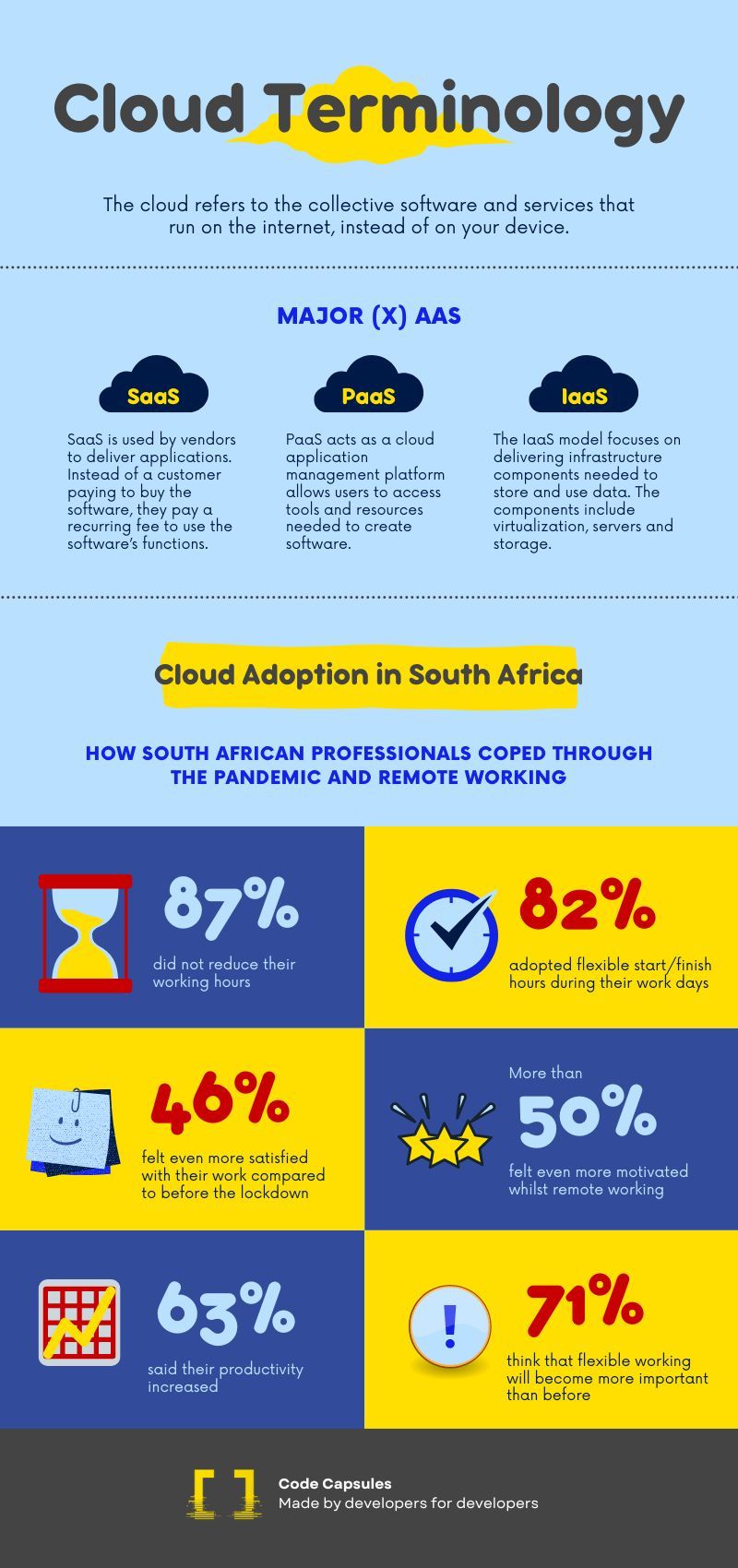Familiarizing yourself with cloud terminology is almost a requirement in the modern work environment. If you are curious or have other reasons to know more about the cloud, this is the article for you.
Let’s take it from the top.
When we say ‘the cloud,’ we refer to the collective software and services that run on the internet instead of your device. Most of them are accessible via web browsers, while some companies make apps for their offerings.
With that in mind, cloud computing is the delivery of services and resources via the internet. It involves access to tools, apps, storage, analytics, software, and more.
You might have wondered, ‘what is PaaS and cloud deployment?’ We are about to get into that.
What Is a Cloud Application?

A cloud application refers to a program/software with some or all of its components and processes residing and running in the cloud. The user interacts with the program/software using an interface that may be web-based or a mobile app.
The data processing combines the device you’re using and the cloud infrastructure to deliver the experience to you smoothly.
From a non-technical user’s perspective, they are simply using a standard website. However, the cloud handles the data processing and computing using an application programming interface or a combination of the user’s device and cloud infrastructure.
There are different cloud deployment models of cloud computing, all of which work differently but with the same goal – to deliver the convenience of cloud apps to users.
Public clouds
Public clouds refer to cloud environments that are built on IT infrastructure now owned by the end-user. Some of the ubiquitous cloud companies running public clouds include Microsoft (Azure), Amazon Web Services (AWS), Google Cloud, Alibaba Cloud, and IBM Cloud.
Pro Tip: If you want to tell cloud types apart, public clouds are where the environment is segmented into portions used by more than one tenant.
Private clouds
A loose definition of private clouds would refer to cloud environments purely dedicated to one end-user or entity, where the cloud environment usually runs behind the user/entity’s firewall. Times have changed since the cloud was first a thing – private clouds no longer have to use on-premise infrastructure.
Private cloud owners can now have their environments hosted on rented data centers run by third-party vendors, making ownership and location flexible in this context.
Pro Tip: All clouds become private clouds when the environment’s infrastructure is set aside for one user, with isolated access protocols.
Hybrid clouds
Hybrid clouds are not easy to define and will depend on who you ask. However, some of the hallmarks of a hybrid cloud approach include the presence of at least 1 private cloud and at least 1 public cloud, 2 or more private clouds, 2 or more public clouds, bare-metal or virtual environments linked to at least 1 public or private cloud.
In simpler terms, a hybrid cloud presents itself as a single IT environment that is created out of multiple environments that rely on wide area networks (WANs), local area networks (LANs), virtual private networks (VPNs), and/or APIs to function.
A hybrid cloud is only ‘hybrid’ when apps can move in and out of multiple but separated environments. Some of the environments have to be from IT resources with the ability to scale when required. All the environments have to be managed as one environment using integrated management and orchestration tools.
Multi-clouds
This cloud approach leverages more than one cloud vendor, either private or public. A multi-cloud environment may be planned out and implemented or occur accidentally due to shadow IT (information technology projects managed outside and without the knowledge of an organization’s IT department.)
Having multiple clouds seems to be the norm, rather than the exception, for many organizations looking to improve performance, security and avoid being locked in with one vendor.
More Cloud Terminology
Other pertinent portions of cloud technology offer us more insight into how the systems work, what they are built on, how they are managed, and more.
Let’s dive in and define some more terminology.
What is cloud security?
Cloud security refers to the measures put in place by a cloud manager/vendor/operator/user to prevent leaks, theft, or loss of data. The most common methods to provide cloud security include VPNs, restricting connections to public internet channels, tokenization, firewalls, and regular testing.
Cloud security involves not only keeping the customers happy but operating within the confines of regulatory requirements (they change from country to country) and submitting to third-party audits to ensure that the cloud provider does what they are legally and or morally obligated to do.
What is cloud management?
Cloud management refers to the maintenance of control and oversight over public, private, or hybrid clouds to ensure that the systems work as they should. The control exercised over the cloud infrastructure helps IT professionals utilize what they have fully.
With cloud management, an organization can monitor its workloads, enhance user experiences, automate workflows, and offer self-service for flexible operations.
Cloud management is vital in ensuring that a cloud environment is optimized in performance, cost, sustainability, and regulatory requirements.
There are tools to help monitor every aspect of the cloud environment, making it easier for admins to monitor the status of cloud-based resources.
What is cloud infrastructure?
The collection of components needed for cloud computing, including hardware, storage, network resources, and additional abstracted resources, constitute cloud infrastructure.
The term also refers to the tools needed to build a cloud.
What is cloud automation?
Cloud automation is the use of technologies that perform tasks with no/minimal human intervention or assistance. In the cloud, automation helps accelerate the unifying processes of the cloud and scale environment while building continuous delivery, deployment, and integration.
Cloud automation forms a crucial part of cloud management, since it is impossible to keep track of everything in a cloud environment due to a phenomenon known as cloud sprawl.
Cloud sprawl is the name given to the uncontrolled spread of an organization’s cloud instances, providers, and services.
The phenomenon is usually a direct result of an organization lacking visibility into – and or control over cloud computing resources.
Where do SaaS, PaaS, and IaaS fit in?

We know how the cloud works to deliver resources, tools, apps, and more to users. But did you know those cloud environments can also be used to deliver services? That’s right. From this service delivery method, we get the concept of Anything-as-a-Service (X)aaS (where X stands for a type of service.)
More people are likely to consume software using a subscription model since it offers them more flexibility and saves money, in addition to only using and paying for as much as they need. For (X)aaS, customers pay to use the functionality of (X) instead of buying the solution.
Think of it as renting the tech functions without paying for the entire system that underlies said functions. This segment is where we answer the question ‘what is PaaS and cloud deployment?’
Software-as-a-Service (SaaS)
As the name implies, this delivery method is used by vendors to deliver applications. Instead of customers paying to buy the software, they can pay a recurring fee (cancellable any time) to use the software’s functions.
The fee covers more than just the services offered by your cloud application platform. You’ll be given updates for security, functionality, and newly integrated technologies, tools, and more. Though that fee may not cover all those offerings with every SaaS provider, many won’t ask for additional fees to get upgrades and updates.
Platform-as-a-Service (PaaS)
Under the PaaS delivery method, the services provided are accessible through a web browser. Platform as a Service acts as a cloud application management platform that allows users to access tools and resources needed to create software. Instead of buying a complete software program, PaaS allows users to build their own software, which gets the designation of a cloud application development platform.
The advantage of this cloud-based application platform is that a user doesn’t have to look for every resource needed to create new solutions. Subsequently, the development and deployment of apps becomes easier and costs less.
Using the best cloud application development platform can, in some instances, reduce the amount of code a user has to write to complete their solution/idea.
With a cloud-based application platform, users have more customization options than when using SaaS (where everything is presented neatly in a bow), allowing them to create solutions with just the functions they need.
It all seems exciting and well-priced, which might lead one to ask if free cloud application platforms exist.
Infrastructure-as-a-Service (IaaS)
The IaaS model focuses on delivering infrastructure components needed to store and use data. The components include virtualization, servers, and storage.
IaaS takes a self-service approach, which leaves the management and maintenance of other components to the user. IaaS presents a scalable, flexible, and cost-efficient way to host everything you have yourself. Everything else you need (additional storage, processing power, and more) is accessible whenever needed.
Any organization or business can run smoothly by scaling up or down to accommodate demand, and only pay for what they need and use at any given time.
There’s more
The approach of delivering services over cloud technologies is not limited to just PaaS, SaaS, and IaaS. Other services include CaaS (Communications-as-a-Service) and DaaS (Database-as-a-Service).
The cybercrime world has taken notice and now has groups that provide MaaS (Malware-as-a-Service). As you can imagine, the concept conjures up images of a ‘shop/store’ where anyone can buy custom or pre-written malware – which is, in many ways, how it works.
The Top Cloud Application Development Platforms
The top cloud providers offer application development platforms (PaaS) with varying formats, merits, and drawbacks. Let’s summarily look at the global PaaS leaders:
Microsoft Azure
- Microsoft Azure offers both PaaS and SaaS capabilities. Users can utilize services on the cloud or combine them with existing apps, infrastructure, or data centers that may already be established.
- Like many cloud providers, Microsoft Azure blurs the line between IaaS and PaaS, where the services are mixed and matched to fit a user’s needs or requirements.
- With complete platform management, the PaaS solution Azure offers can fit any organization’s needs (storage, web hosting, networking, and more).
- Users can move away from on-premises servers, reducing cost (since there’s no need for in-house support staff) and saving time.
Amazon Web Services (AWS)
- Amazon Web Services (AWS) provides users with a way to create or build business solutions via integrated web services while offering more than just PaaS access.
- AWS users have access to a variety of cloud services that include database storage and content delivery. Users access AWS Elastic Beanstalk in the same subscription, which is a more straightforward and efficient services deployment method.
- After uploading apps, everything that comes after is the responsibility of Elastic Beanstalk, which scales your application based on the resources needed.
- AWS offers three pricing models – Pay-as-you-Go, Pay Less Using More, and Save when you reserve. Prices for the models are available upon request from AWS sales.
Google Cloud
- Google Cloud offers all the capabilities a user needs to set up PaaS. It has an intuitive engine capable of automated resource allocation and management.
- Google Cloud offers access to Google’s web services, which developers can use to build highly specialized/custom solutions for their particular needs.
- The PaaS offering is left in charge of running, managing, scaling, monitoring, and hosting everything.
- Google Cloud is reliant on Linux, so it is recommended that potential users be familiar with the Linux command line, which makes firewalls, gateways, and routers implantation easier.
IBM Cloud
- IBM cloud takes an approach that intends to help businesses connect applications, infrastructure, and data smoothly, especially where legacy systems have to work with modern ones.
- Data sync on-premises easily and in the cloud and combine with APIs, which makes it easier for different applications to utilize it.
- IBM Cloud has pre-built templates applicable to different workflows that can then be combined for process automation. Moreover, users enjoy monitoring to ensure the workflows continue to work as intended, with tools to take care of issues that may arise.
- For IBM Cloud, the goal is about working with business logic instead of spending time and money on the underlying architecture. All this is coupled with app integration that enhances adaptation and utilizes capabilities that optimize as much as possible to increase productivity.
Oracle Cloud Infrastructure
- Combining open-source technology and Oracle technology, the Oracle Cloud allows users to efficiently develop, deploy, integrate and manage all cloud applications.
- The cloud also uses a combination of machine learning (ML) and artificial intelligence (AI) to offer self-repairing capabilities, predictive data/insights, and reduce startup costs.
- Oracle says it has the most extensive PaaS portfolio of any vendor and touts its ability to reduce costs and complexity.
- Data and applications can be integrated, enabling users to migrate every process to the cloud, which they can manage from a single platform, with the comforting knowledge that it’s all encrypted by default.
- Oracle’s most prominent and often-repeated selling point is that it does everything for its users, saving time on updates, maintenance, deployment, and more.
The Future of Cloud Deployment in Africa and South Africa
It wasn’t too long ago that cloud adoption started gathering momentum. Today, especially after a brutal pandemic that has lasted too long, it is not just mainstream but essential. Cloud deployment in Africa may have lagged pre-pandemic, but the lockdowns accelerated things.
The business environment is now in an era where the cloud enables a growing number of employees to work at home.
As new communications technologies converge with the pandemic-induced ‘work from home’ reality, cloud deployments are only going to increase. In many parts of the world, cloud providers are opening up new cloud regions to serve a growing portion of the population that has to work on the go.
In South Africa, only about 26% of the employees surveyed by Michael Page Africa worked from home. The lockdowns that followed the pandemic necessitated that work continued, which saw the work-from-home population jump to 79%, signaling a trend that the country and Africa as a whole are prepared to step into the future.
Clearly, in South Africa, as everywhere else, cloud adoption presents an inevitable future, one that is already seeing more investors and businesses commit to the new agile reality. At the same time, machine learning and AI continue to make cloud use accessible, which further fosters adoptions, even among non-technical folk.
Final thoughts
The beauty of the cloud lies in its ability to present users with scalability, security, and ease of use. When considering your own PaaS and cloud deployment, ensuring that your vendor demonstrably provides all those things is crucial.
It doesn’t end there, though. A customer has to know how their data will be stored and backed up, what happens to the deployment if a vendor goes out of business (not likely, but necessary nonetheless), how to get existing data into the solution (for continuity and smooth business operations), and more.
Should an interested customer be unsure of anything, consulting experts is highly recommended as a way to identify the needs and which vendor would be best suited to meet them.
There’s no doubt the cloud is no longer the future, but the present reality, driving innovation, collaboration, education, work, the Internet of Things, communication, and more.
